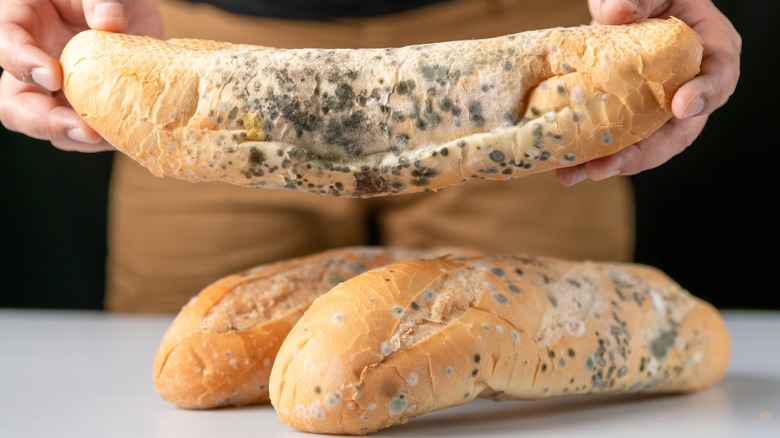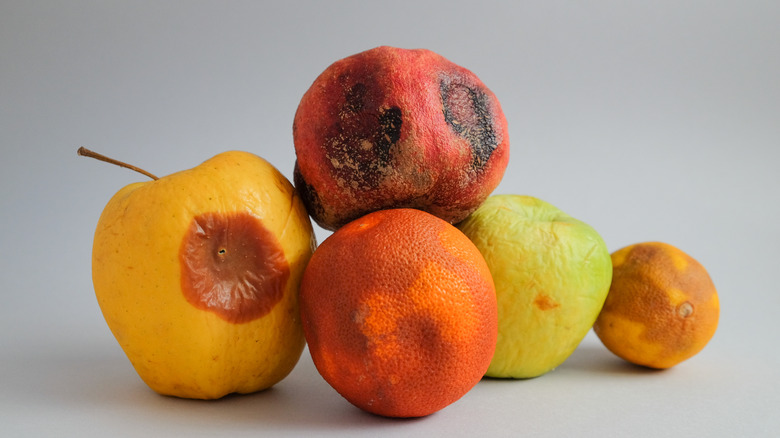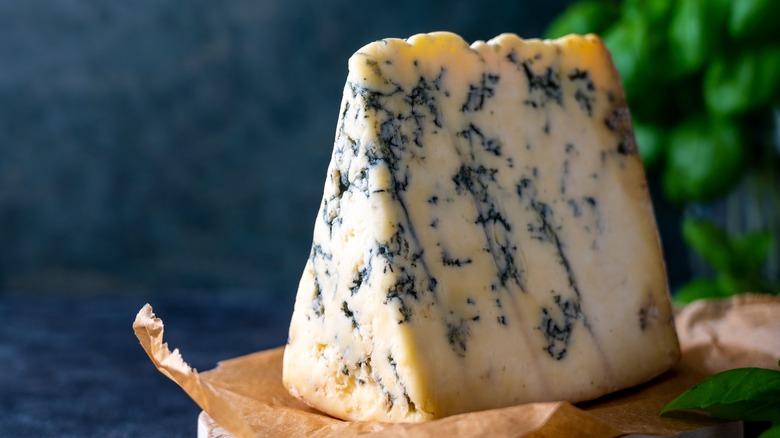What To Do If You Accidentally Eat Mold
When making yourself something to eat after a long day, few things are as upsetting as biting into your sandwich or fruit only to be met with the off-putting taste of mold. Yuck! The taste is certainly memorable and definitely unpleasant, often described as an earthy-sour flavor reminiscent of wet dirt. On food, mold often appears as fuzzy green, white, or black spots with an unpleasant taste and smell. However, it's not uncommon for mold to grow deep under the surface of food like bread or cheese, making it all too easy for an unsuspecting consumer to accidentally ingest some of the fungi. Once this happens, there are a few possibilities of what to expect once mold gets into a person's system.
In general, most people will be completely fine (though probably a bit annoyed and unhappy) after consuming a small bit of mold. But since everyone's body is different, and since there are many varieties of mold that can cause a range of side effects, you should keep in mind that you ate the mold and monitor any symptoms that may arise after some time has passed. While many molds are harmless, there are a few types that can pose big problems for your health so you should definitely pay close attention to how you feel and be prepared to contact Poison Control or your doctor if you begin to fill unwell.
The threat of mycotoxins
According to Cleveland Clinic, ingesting mold can sometimes cause allergic reactions and lead to symptoms such as respiratory issues and gastrointestinal distress. You should speak to a medical provider right away if you experience any of those symptoms after eating mold. Molds are harmful all on their own, but they can carry other dangers along with them as well. The U.S. Department of Agriculture explains, "A few molds, in the right conditions, produce 'mycotoxins,' poisonous substances that can make you sick." Mycotoxins are naturally occurring and contaminate a number of crops, including grains, nuts, fruits, and vegetables. Grains used to make animal feed are also known to carry mycotoxins, which can cause animal products to become tainted with these dangerous substances as well.
If that wasn't upsetting enough there's a huge variety of mycotoxins and scientists are discovering new ones regularly. It's often been repeated that up to 25% of the world's crops are affected by mycotoxins, but a 2019 study from Queen's University Belfast found that that statistic is likely far too low (or at least very outdated), estimating that 60-80% of the world's crops could be contaminated with mycotoxins.
Mold can grow on practically any food, though fresh produce and perishables are at greater risk than processed goods and a few foods that are resistant to mold. The pesky fungi can even contaminate foods that have been cured or preserved, which means it can be difficult to completely eliminate the risk of mold developing. It's also impossible to tell if mold is dangerous just by looking at it, so if you do find some fuzzy spots on your food, it may be best to just throw it out, depending on what it is.
What to do with moldy food
Some foods are made with mold and are perfectly safe to eat. But unless you're about to chow down on a hunk of Gorgonzola, any mold you find on your food should probably be removed. Fortunately, that doesn't necessarily mean the entirety of the food has to go to waste. For certain hard foods like apples, carrots, firm cheeses, and firm cured meats, the moldy area can be cut away. There's often more mold hiding underneath what you see on the surface. As such, when removing mold from food, Healthline suggests cutting at least 1 inch around the moldy spot and being particularly mindful not to let your knife touch the mold. On the other hand, mold can easily permeate soft foods like yogurt, baked goods, berries, gooey cheeses, and jams. This sadly means that if you find mold in a moist, fragile food, you should discard all of it. If you're ever unsure whether moldy food can be salvaged, tossing it out is always the safest option.
Once you've eliminated the offending moldy food, it's important to thoroughly clean whatever surface it was resting on, and inspect neighboring food for any sign of contamination. Store or refrigerate your food properly, make use of the refrigerator crisper drawer for produce, and keep any exposed food covered to avoid spreading any airborne mold spores. Ingesting mold can be serious business, but in many cases there's nothing to worry about. So, next time you accidentally eat something you shouldn't, just remain calm and look out for symptoms — you'll probably be fine.


